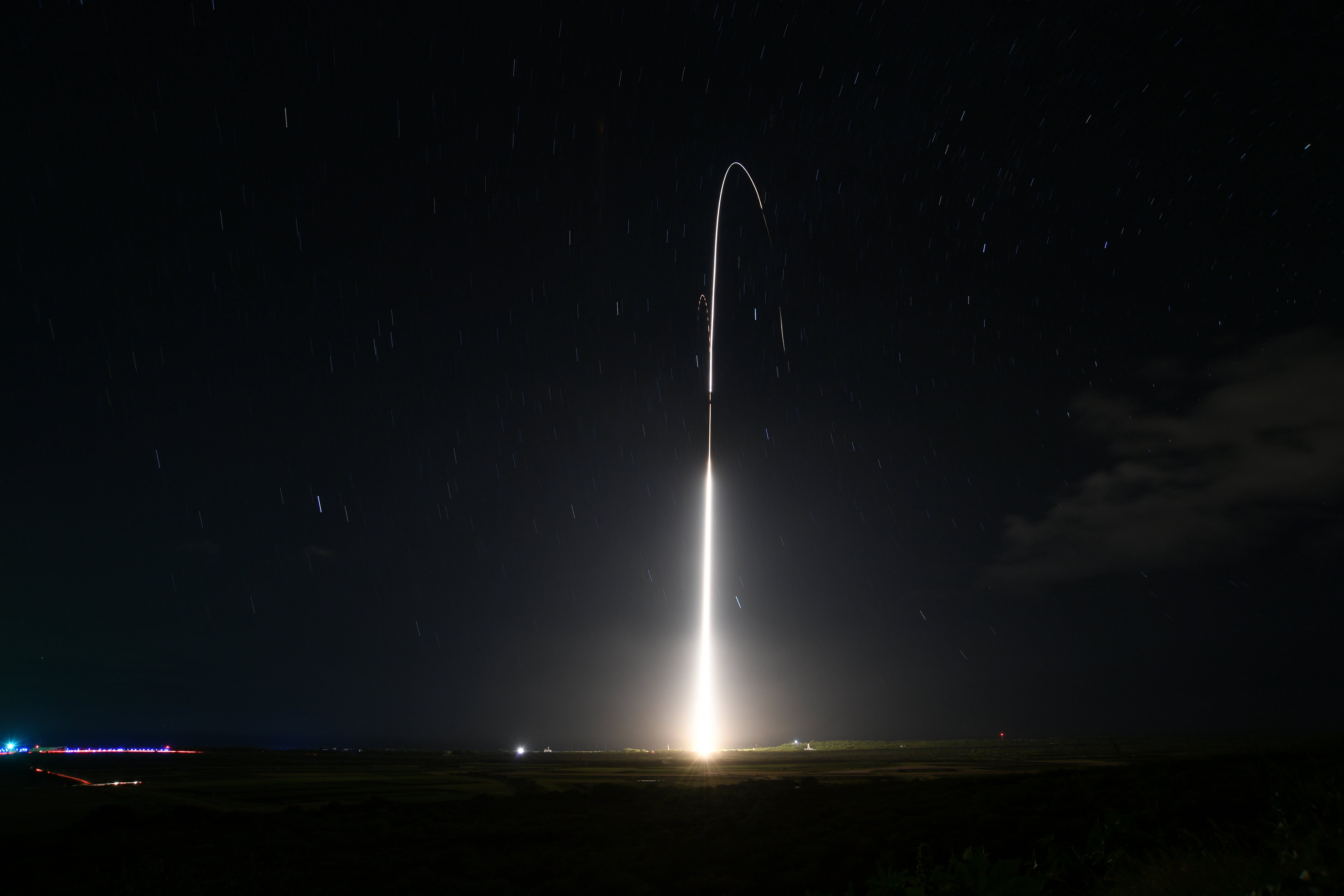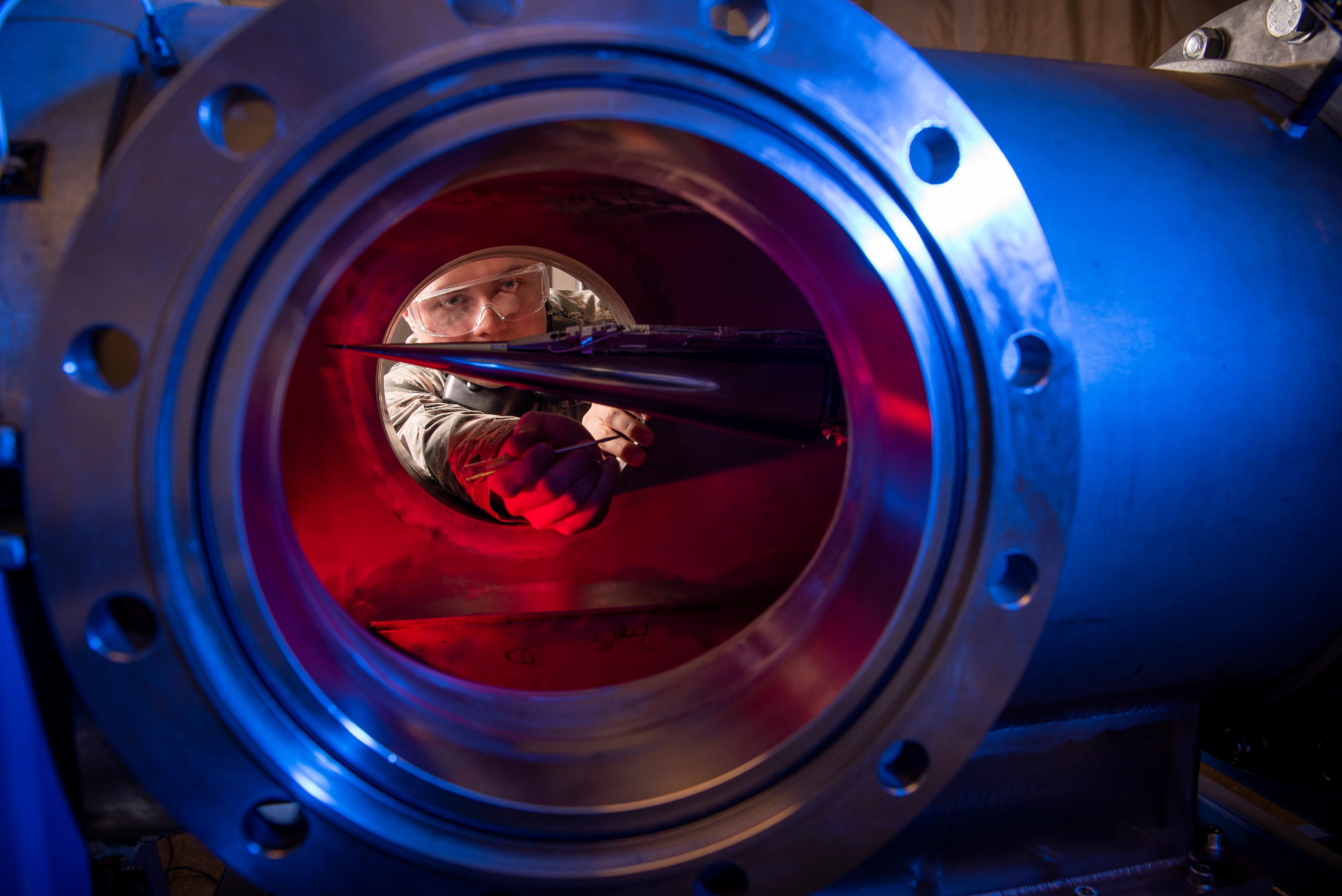HUNTSVILLE, Alabama — The Missile Defense Agency has a new director, Vice Admiral Jon Hill, who will be tasked to carry out major missile defense endeavors laid out in the Missile Defense Review released in January.
Hill is the son of an Army air defender and became deputy director of the agency in 2016. Prior to that he served as the U.S. Navy’s Program Executive Officer for Integrated Warfare Systems (PEO IWS) beginning in 2014.
The new director will have to guide the agency through a series of major decisions in the coming years —from refining its approach to a global, layered missile defense, to tackling advanced threats like hypersonic missiles, upgrading homeland defense to protect against, ballistic missiles, to designing, developing and initiating a space-based sensor layer, just to name a few.
RELATED

With his expansive plate full, Hill said he’s prepared to ensure the agency has investment in the right places and that efforts move as quickly as they can to outpace current and emerging missile threats.
Defense News sat down with Hill in an exclusive interview at the Space and Missile Defense Symposium in Huntsville, Alabama, to discuss his goals and the challenges ahead.
What are your major priorities as you take up your post as Missile Defense Agency director and what do you believe will be your biggest challenges on the job?
I would say the number one challenge is the poorly defined term of “transfer to the services.” After looking at this problem very closely, considering congressional language, looking at how it’s interpreted differently, I really do think that, we, as a country, need to say what is the right thing to do to take care of the war fighter. That should be the number one issue here.
So there’s been lots of discussion about the [Terminal High Altitude Area Defense System] and the SM-3 [missile] transfer to the services. What does that mean? If it’s operations and sustainment, that’s done. Put it in the done pile. The Army invests heavily in the operations and sustainment of THAAD. I don’t know what more we would want out of them. … The [Army and Navy] are not running away from the mission. They want to execute the mission, and again, they do operations and sustainment very well.
I often hear that we don’t know how to transfer. Look at the Aegis ships today. Navy procures those ships with Ballistic Missile Defense capability. The Navy has come in and said, “Hey, we’re going to build a multi-mission radar to include BMD capability in SPY-6.” Man, what’s wrong with that? That’s fantastic. You look at the SM-6, where the Navy procures, produces that missile. It’s a multi-mission missile. We insert sea-based terminal capability.
So it tends to come down to those two systems that are BMD focused — SM-3 and THAAD — and so that’s why it gets suspicious when we don’t have a fully defined term because all it really results in is fracturing a program during a time where it’s most critical to have those programs stable and taking care of the warfighter.
What are some other priorities and challenges you will tackle?
I would say the bigger challenge though is really driven by the threat today and Dr. [Michael] Griffin [under secretary for research and engineering in the Office of the Secretary of Defense] speaks about the Space Development Agency. We’re aligned with the strategy, we’re aligned with their architecture and their engineering of [a space] constellation because we bring the capability for hypersonic and ballistic tracking. We have support from Congress to do that. The department wants and needs us to go do that.
RELATED

It’s just important to get that deployed as soon as possible. So we have to maintain stable investment. We need to get to a near-term, on-orbit demo as fast as we can, and then we need to build out the constellation in concert with the Space Development Agency. If we do that, we’re in a great place.
And in parallel, we need to start looking at our existing systems, which we have been doing. We’re making modifications to today’s sensors, both terrestrial and in space today on ships, on land, and we’re modifying those today to deal with that new, high-end threat. We’re also looking at existing weapons. What can they do? Somewhere in that battle space though, there’s probably the need for more capability and that’s really the next step and where we as a country need to go.
You advocated for a Hawaiian missile defense radar and noted that while the Ground-Based Midcourse Defense System, designed to protect the homeland, is a good system, more radars need to be in place. Can you talk more about the advanced threat and the need to enhance missile defense sensing capability?
When you look at a ballistic flight for example, you boost, you have things like V-Bands and separation mechanisms, you’ve got staging, you’ve got post-boost vehicles, and you’ve got the lethal object; that’s messy from the standpoint of a radar. So when the radar’s staring at all that mess — the word discrimination means, “Hey, I’ve have got to discriminate all the garbage and make sure I’m pointing at the right thing.” Reduce the amount of radar energy I’m putting on all the garbage, so I’ve got to very quickly discriminate. So discrimination’s important. And as they become more complex, the radar, in a sense of the architecture we have today, is not ready to take on larger numbers coming in and more complexity. Having a large radar on the island allows you to see out far. So the bigger the aperture is, the more fine detail it gets too.
I think we owe it to the Hawaiian people. We owe it to that state. It’s part of this country and they deserve to be defended and they want to be defended. We have great congressional support. So at the federal level we’re good, at the state level, we’re good. We’re at the sensitive level now where the local communities are concerned about what it means for the environment and we understand that. So we’re working very closely with them. It’s an important capability. It fills out the sensor architecture and takes us to the next level in terms of central architecture in that region.
Why do we need a space-based missile defense sensor layer?
We’re running out of islands to put radars on and the ships that the Navy has, they are equipped with 360-degree radars, very powerful radars that can discriminate. But … we need to free up those ships as much as we can and get as much persistent sensor coverage as we possibly can. And space really answers the mail on all those aspects, it frees up those other assets that we can go use for other missions.
An analysis of alternatives has been completed on hypersonic defense. Is there anything you can share about the findings in the AOA and how that is guiding the path forward?
For that space mission you have to look at the sum total of the detection, the control and the engagement. [It is] the sensors, it is the command-and-control, it is the fire control and it is the weapons, whether they’re hard kill or non-kinetic. So, it’s all of that. It provides the department a broad view: here is the threat space we’re dealing with, here’s the architecture, here are the pieces of that architecture that do detection, control and engagement. And now Department of Defense, where shall we put our next dollar? Could be that next dollar goes to space. It could be that next dollar goes toward fire control improvements so that you can handle something that’s flying this fast, greater than Mach 5. It could be that we’re going to put another dollar on improving an existing system or that we need a new engagement system. So that’s what it does. It’s really a tool. It’s not the answer. I’ve seen a lot of the reports that say, “Oh my God, it’s so expensive. We’ll never execute it.” The intent is never to go fully execute what’s in an AOA. It’s the full trade space. Now we’ve got to go pick from that trade space and so we finished up a [Cost Assessment Program Evaluation] sufficiency review. Not only have we done the work to do the alternatives … the CAPE has come in and they’ve costed those out to say, here’s what’s a reasonable set. The department can make a decision as to what would be best.
RELATED

Is the SM-3 Block IIA missile test that goes up against an intercontinental ballistic missile threat still scheduled for next year?
It is still scheduled for next year. Now what you should know is that Congress has sent us some messaging that says maybe we don’t want to do that, maybe we should more fully explore the battle space for which the missile was designed. … Congress first told us to go against an ICBM. That’s what we’re focused in on. And so if the appropriations come through and there’s a change, then we have to go back and replan.
Would the delay in the test result in overall program delays?
It wouldn’t delay the program. But it makes it difficult for us to say that there is a potential for an underlay. So, if we want to give the combatant commanders a layered defense against ICBMs, it kind of takes that off the table or it delays that for awhile and we’ll use the IIAs for their intended battle space and we won’t try to expand it.
What’s happening with the “strategic pause” on the Redesigned Kill Vehicle for the GMD system?
We’re still in a decision space. … Dr. Griffin is going through the end-game of discussions now within the building. We’re in full support and in the end we’ll make a decision and we’ll press forward with that.
Do you have a timeline for making a decision on the RKV?
We’re definitely pressured and what drives that pressure is the fact that we were on a path to deliver the additional 20 [ground-based interceptors]. … We’re building out the missile field. So there is pressure to come to a decision quickly so that we can then get back to work.
Jen Judson is an award-winning journalist covering land warfare for Defense News. She has also worked for Politico and Inside Defense. She holds a Master of Science degree in journalism from Boston University and a Bachelor of Arts degree from Kenyon College.








